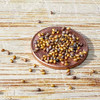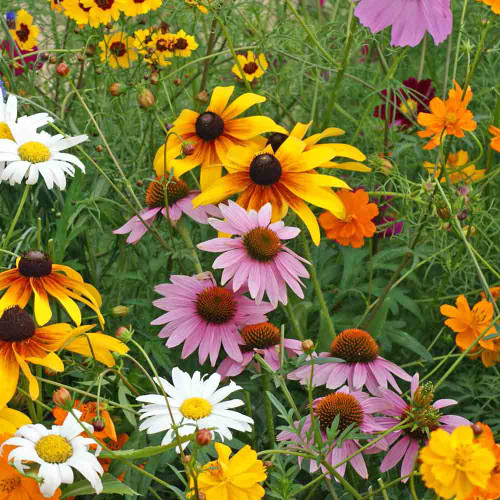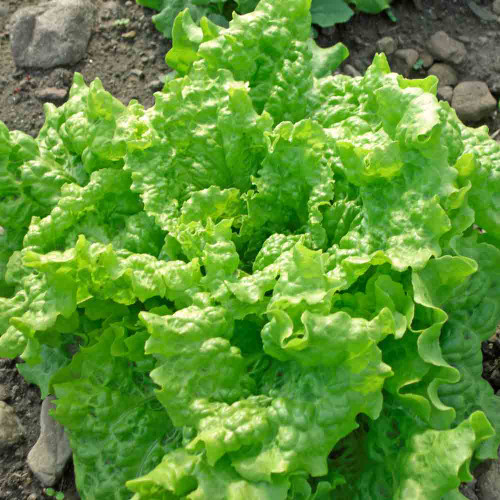Description
Johnny Jump-Up - A Pansy for Every Garden
While many flowers chase the fleeting heat of summer, you'll find the Johnny Jump-Up’s strength is in the cool, quiet corners of the season. This classic, cheerful flower is a lesson in hardiness, proving that the most enduring beauty often comes in small packages. You'll enjoy a near-continuous display of color through the crisp days of spring, the gentle fade of autumn, and even mild winters, long after other annuals have given up. It’s more than just a pretty face; it's a multi-purpose marvel, offering you unique mint-and-wintergreen flavored blooms for your kitchen and serving as an essential host plant for beautiful Fritillary butterflies, bridging the gap between an ornamental and a truly living garden.
Details
Ideal for the front of your borders and containers, the plant forms a compact, bushy mound, typically reaching 4 to 10 inches tall with a spread of 6 to 12 inches. You'll appreciate its simple, heart-shaped, or elliptical leaves that are smooth and medium to dark green. While prized for its visual appeal, you'll discover its flowers are also edible, offering a unique and nuanced flavor. The five-petaled flowers, about an inch in diameter, have a subtly sweet taste with distinct notes of mint and wintergreen. After pollination, a three-parted seed capsule develops that, when dry, can split open with surprising force, ballistically ejecting its seeds into the surrounding area. While it is not invasive, this charming habit means you'll often be greeted by welcome volunteers in your garden the following season.
History
The story of the familiar and cheerful Johnny Jump-Up is a direct result of the Victorian-era obsession with plant breeding. The journey began in the early 1800s, when English horticulturalists like Lady Mary Elizabeth Bennet and her gardener William Richardson started intensively cross-breeding the small European wildflower known as Heartsease (Viola tricolor). Long before the first large-flowered pansies appeared, this charming wildflower and its relatives were associated with thought in the "language of flowers" and were often called by their French-based name, pansy (from pensée, or thought).
The modern Garden Pansy as we know it was born in 1839, when another gardener, William Thompson, discovered a chance seedling with broad, dark blotches that gave it a distinctive "face," creating a floral sensation that captivated the era. It’s from this rich history that the specific hybrid most gardeners seek today emerged: Viola x williamsiana, which honors the notable 19th-century nurseryman and author Benjamin Samuel Williams and ties this beloved flower to a deep legacy of garden innovation.
Uses
You can rely on Johnny Jump-Up as a versatile flower that serves a dual purpose in the garden and kitchen. Its primary role is as a long-blooming ornamental, perfect for edging pathways, filling the front of beds, and adding vibrant color to containers, window boxes, and hanging baskets. You'll find a particularly effective use for it as a "living mulch" planted around spring-flowering bulbs; as your bulb foliage begins to fade, the violas grow to fill the space, providing a continuous and lovely display of color.
Beyond its beauty, you can add the flowers to your kitchen as a unique culinary ingredient. With a delicate, crisp texture and a surprising mint-wintergreen flavor, they make a beautiful and flavorful garnish for salads, desserts, and cocktails.
Companion Planting
The most effective companion planting strategy for Johnny Jump-Up is based on aesthetics and succession. Their ability to mask the fading foliage of spring bulbs is a classic and highly effective pairing. They also grow well with other cool-season crops like lettuce and chard, or under-planting taller perennials like roses, where their low, mounding habit creates a beautiful, living groundcover.
From an ecological perspective, its most important role is as the essential larval host plant for Fritillary butterflies. The caterpillars of several Fritillary species feed exclusively on viola leaves, meaning the presence of this plant in your garden is fundamental to the survival of these native butterflies.
Planting and Growing Tips
To get the best results from this versatile cool-season flower, you should start seeds indoors 8 to 12 weeks before your last spring frost. The seeds have specific germination needs; sow them on the surface of a moist seed-starting mix and cover only very lightly, as there is conflicting evidence regarding their need for darkness versus light. Maintaining a consistent soil temperature between 62°F and 70°F is critical for good germination.
For autumn and winter blooms in milder climates, you can start seeds in mid-to-late summer. After hardening off, transplant your seedlings into a location with full sun to partial shade in fertile, well-drained soil. In areas with hot summers, afternoon shade is crucial for prolonging the life of the plants. You'll want to space them 6 to 9 inches apart to ensure good air circulation, and keep them consistently moist. The single most important maintenance task is deadheading, which directs the plant's energy into a continuous display of blooms. As a hardy plant, you can grow it as an annual in USDA Zones 4-9, and it will perform beautifully even if you experience light freezes, thriving as a winter annual in warmer climates (Zones 8-11) to extend the seasons of color in your garden.
Harvesting Tips
For the best culinary experience, harvest the flowers in the cool of the morning when their flavor and fragrance are at their peak. Select freshly opened blooms and snip them at the base. For the best taste, gently remove the green sepals from the back of the flower, as they can be bitter. The delicate petals are best used fresh, but you can store them for a couple of days in an airtight container in the refrigerator, layered between lightly dampened paper towels to maintain their freshness.
Learn More
From the soil to the seed to the food you eat - we'll help you grow your best garden!















